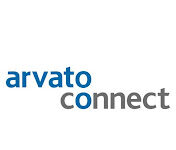To gain an accurate estimate for an IT project, you need to know exactly what you want to do with it in the future.
To gain an accurate estimate for an IT project, you need to know exactly what you want to do with it in the future. And in order to get an exact estimate, you need to provide as much information as possible. As difficult as it may be to put your thoughts on paper and convert them into specific facts, it is worth it since it will save you time and save future problems. Giving your software services provider an explanation of your concept increases your chances of receiving an accurate quotation. The next steps in the development process are heavily influenced by the results of the requirements collecting stage.

Requirements types
Because there are several alternative types of requirements, your requirements management strategy should contain the definitions you used. You will have better knowledge as a result of this. Classifications of requirements are as follows:
- Business requirements: outlining the project’s primary goal.
- Stakeholder requirements: a description of the demands of the individual or group of stakeholders.
- Solution requirements: the qualities, features, and functionalities of the product or service or the end result that will satisfy the needs of the stakeholders and the company are described in the solution requirements.
- Project requirements: conditions that the project must fulfill in terms of activities, procedures, and other elements.
- Quality requirements: the effective completion of a project, project deliverables, or following other established standards.
- Transition requirements: defining the temporary circumstances required to go from the present state to the desired state.
Begin with outlining your concept from a more comprehensive angle
What is the project’s overall goal? What do you think the final product will look like? What effects, issues, or requirements will your next product have on the world? What will it enable? You should ask and respond to the appropriate questions in this section. Give a brief description of your ideal solution and its main goal. In an effort to put your business partners in your shoes and assist them in better comprehending the purpose of your concept, try to share your style of thinking with them.
Describe your target market
For whom is your product intended? The demographic you are designing your product for is one of its most crucial components. Who will use it and for what purposes? Together with other stakeholders, identify personas and try to identify as many unique characteristics as you can. After all, you’ll customize your program for your target audience. After that, you may begin developing the necessary criteria.
Define the project’s scope precisely
You should accurately establish the project’s scope and the work that has to be done when gathering the requirements for it. What components does it include? What are the project’s stages, and what order do they follow? Put them on the timetable, break them up into discrete phases, and order them in priority. You will receive a project plan drawing as a result. Additionally, it will be simpler to organize your goals and the flow of subsequent tasks as a result.
Organize your needs into categories
You’ll keep more organized if you categorize your requirements. Functional and non-functional needs are the most crucial ones. You may certainly use more of them; the more explicit the specification, the better for the project management team in the long run. Think about the categories that make the most sense for this specific endeavor. Keep things as straightforward as you can. The project itself may be difficult enough; thus, the documentation should be as straightforward and reader-friendly as possible.
Functional specifications
You must include the features you wish to have in your digital product in the requirements document. The easiest and simplest method to achieve this is to offer them as user stories, which highlight the system’s features and characteristics as seen by the users. Three fundamental questions—who, what, and why—should be addressed.
Remember to focus on the users’ perspective and the advantages they will experience while describing the possibilities the users should have. Keep the description precise and succinct. Setting priorities according to your functional needs is another fantastic idea, especially if there are many of them. Highlight the most crucial ones so that you can plan the next actions much more easily. The MoSCoW technique of prioritizing allows you to designate them as required or optional.
Non-functional specifications
Along with the functionality, you should provide all the information necessary to fully comprehend the project’s environment while gathering requirements. Your most significant expectations regarding the performance quality of the application should be described, for example:
- What traffic can we anticipate in the app and over what period of time (depending on your target market, its size, and the anticipated frequency of using your product), details about security concerns, integrations, etc.,
- the maximum number of users using the app at the same time,
- the speed of the application (including how quickly questions from users are answered), backup frequency,
- are there any technological requirements, and if so, what are they,
- the project’s anticipated completion date.
The success of your project is dependent on complete and accurate documentation of your IT needs
Your whole development and project teams will benefit greatly from this step of the process even if you think it’s unnecessary since it helps you better grasp your product’s needs and expectations. You don’t need any technical skills to write a specification. The major objective is to consolidate all relevant project data, projections, functions, and outcomes into a single location.
Help keep news FREE for our readers
Supporting your local community newspaper/online news outlet is crucial now more than ever. If you believe in independent journalism, then consider making a valuable contribution by making a one-time or monthly donation. We operate in rural areas where providing unbiased news can be challenging. Read More About Supporting The West Wales Chronicle























